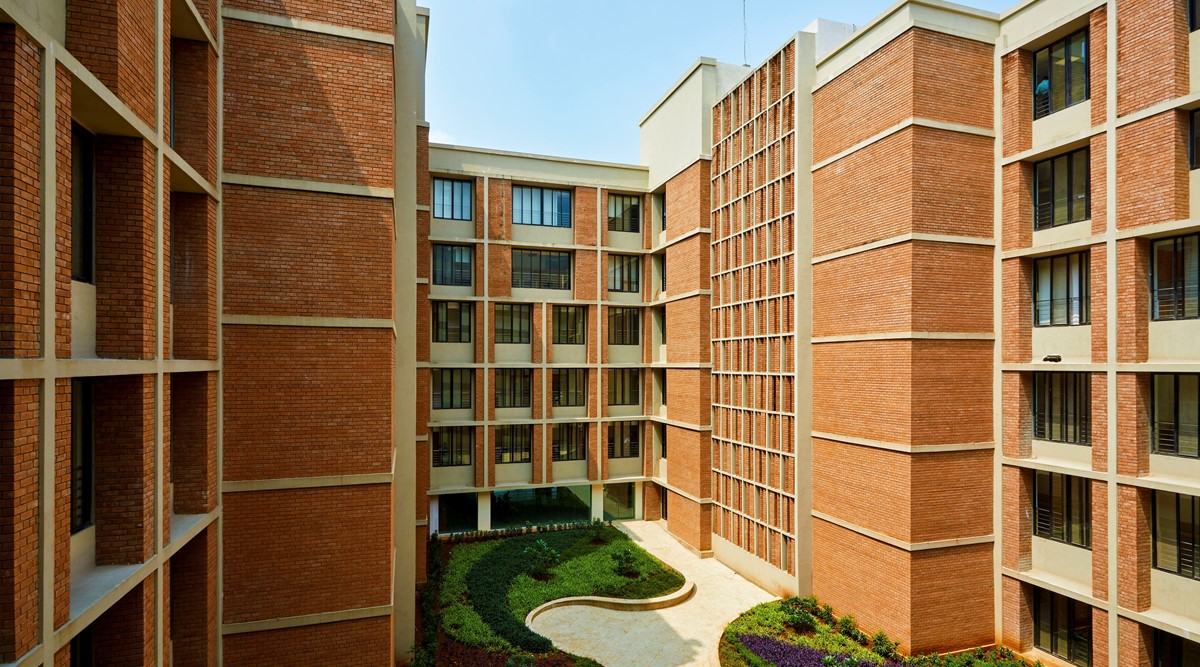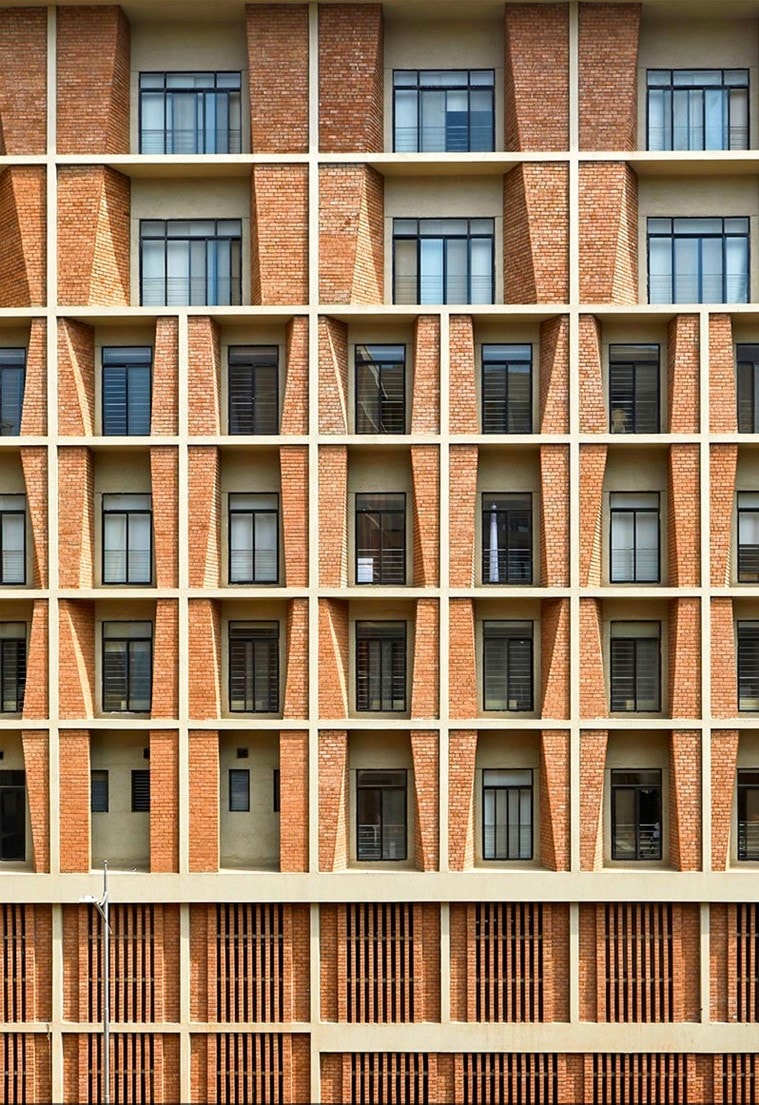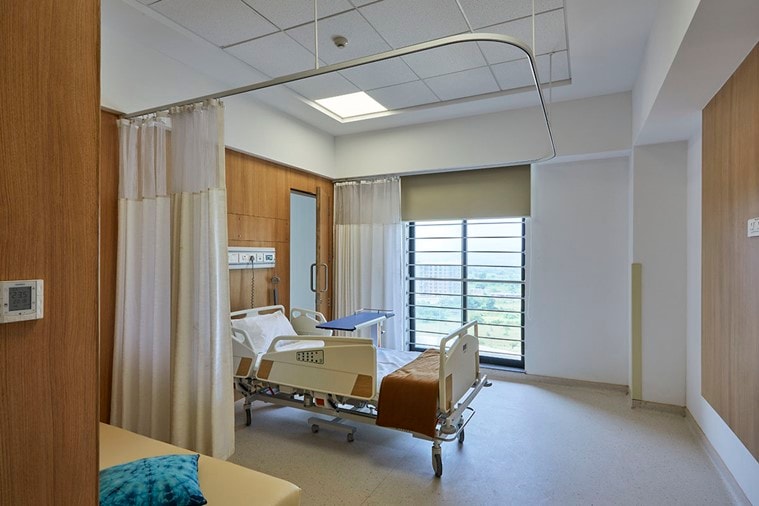 Not only is the building strategically positioned to minimise cut-and-fill of the hill site, the firm also created a balance between light and shade. (Photos: IMK Architects)
Not only is the building strategically positioned to minimise cut-and-fill of the hill site, the firm also created a balance between light and shade. (Photos: IMK Architects) The Symbiosis University Hospital and Research Centre (SUHRC) in Lavale, Pune, was awarded ‘Supreme Winner’ at the prestigious 2021 Surface Design Awards, London, recently. One of the UK’s premier awards, it focusses on interior and exterior surface design in buildings to show innovative use of materials. For Mumbai-based IMK Architects, it was a deserving one, given the extensive R&D they did on Compressed Stabilised Earth Bricks (CSEB).
They had won a competition to design an international university for the clients, Symbiosis Society, and subsequently, started using CSEB as a material in 2005. They chose this over regular kiln-fired bricks because of its low carbon footprint, its structural strength and toxin-free maintenance. Unlike fired clay bricks that used timbre, CSEB requires no fire, but damp soil under high pressure to form blocks. These are usually composed of dry inorganic subsoil, non-expansive clay, aggregates and cement. It has been used in buildings from France to Egypt, Somalia to Mexico. In India too, these naturally-compressed, earthen bricks have had their moment in the sun.
“We wanted to make a green campus, and were not only looking at minimising heat gain or harnessing daylight but also wanted a material where the embodied energy is very low. We visited the Auroville Earth Institute that had already been doing extensive research on the material, and wanted to use something that was hyperlocal, and what better way than using soil from the land,” says Rahul Kadri, Partner and Principal Architect at IMK Architects.
The jury of the awards had this to say: “This is a really beautiful solution using local materials and labour. The facade is meaningful not just decorative, it shades the sun.”
 Within a year and half, the first phase was complete and the second phase with 600 beds was done within six months.
Within a year and half, the first phase was complete and the second phase with 600 beds was done within six months.
“Though our clients didn’t take to it initially, but as the project came to a close, they saw the difference it made. One of our engineers spent three months experimenting with various mixes to get the brick right. We did soil sample studies and learnt everything we could on the material,” says Kadri.
Not only is the building strategically positioned to minimise cut-and-fill of the hill site, the firm also created a balance between light and shade with adequate skylights, inner courtyards and terraces gardens, thus making the hospital a biophilic space that promotes healing.
 The hospital is a biophilic space that promotes healing.
The hospital is a biophilic space that promotes healing.
“Since 2005, we have been using this material in other buildings on the campus too. We wanted to make the material sing. We were curious about how it reflected light and began experimenting with facades. Bhuj-based Hunnarshala Foundation helped us understand the brick too. They suggested us to try corbelling and giving it a faceted edge. All this was born out of the wish to use materials that were green, beautiful and could be made quickly,” says Kadri. And it did!
Within a year and half, the first phase was complete and the second phase with 600 beds was done within six months. It was six lakh sq ft of space, making nearly 5,000 bricks a day. “A mason who trained with us since 2005 became the supervisor and also trained others,” says Kadri, who is busy building colleges, libraries, resorts and housing projects, besides the most ambitious project of the Maharashtra government, the Mumbai Coastal Project.